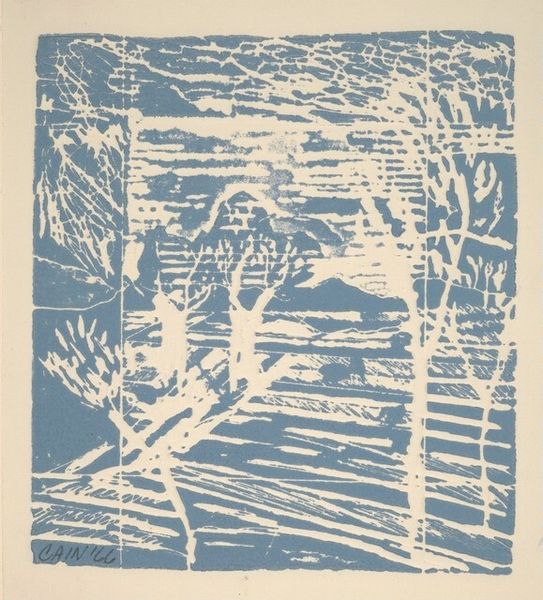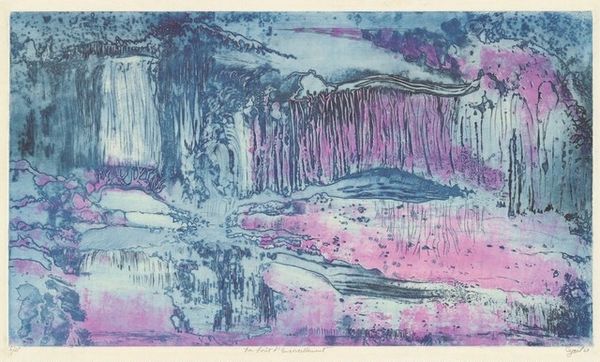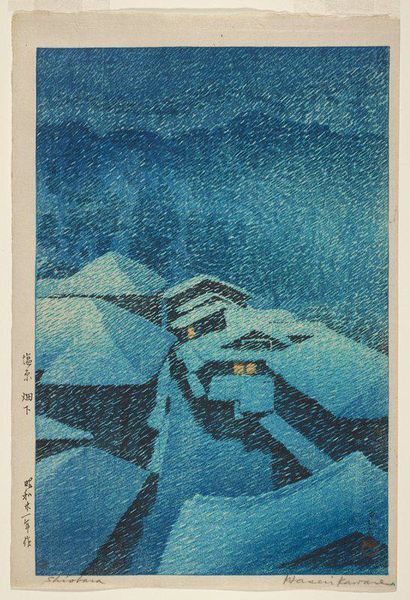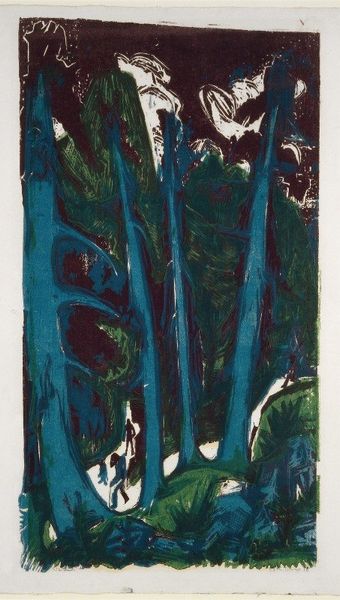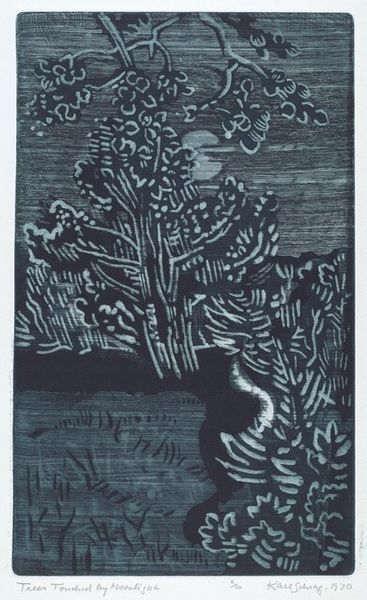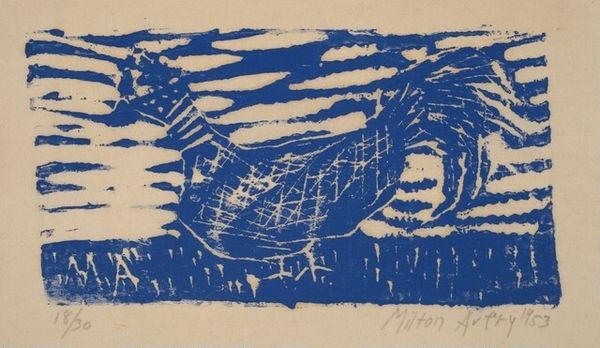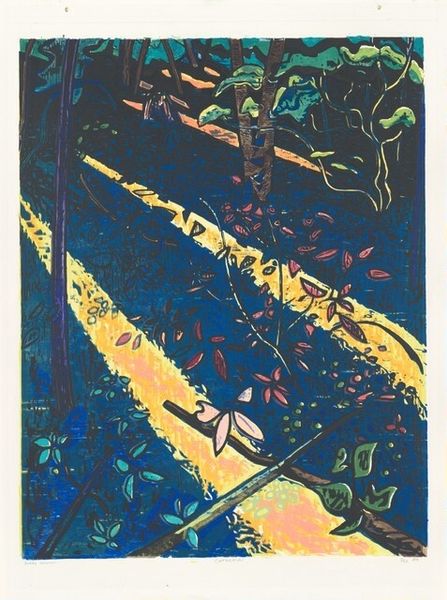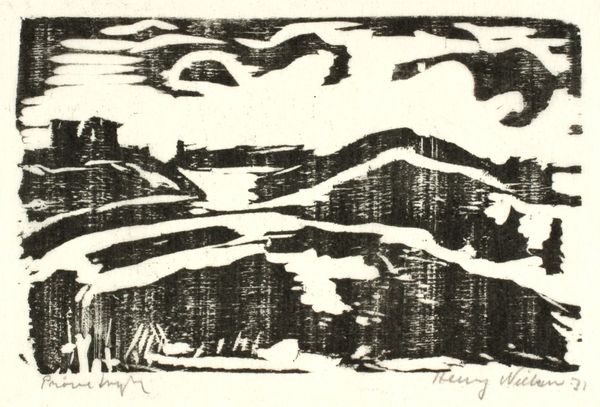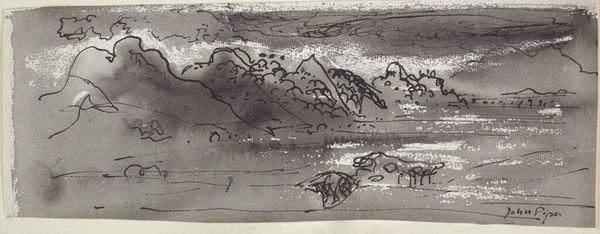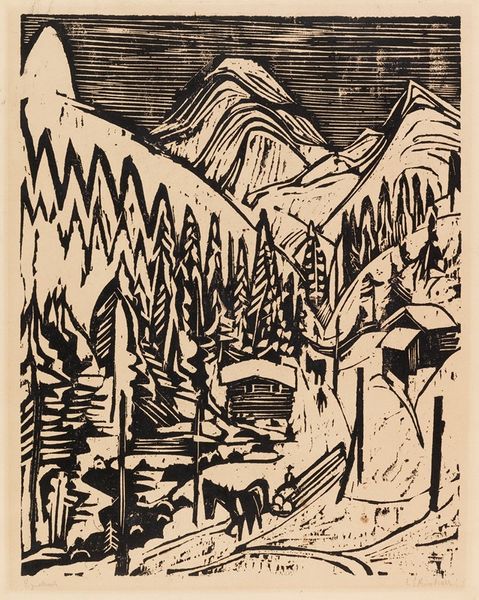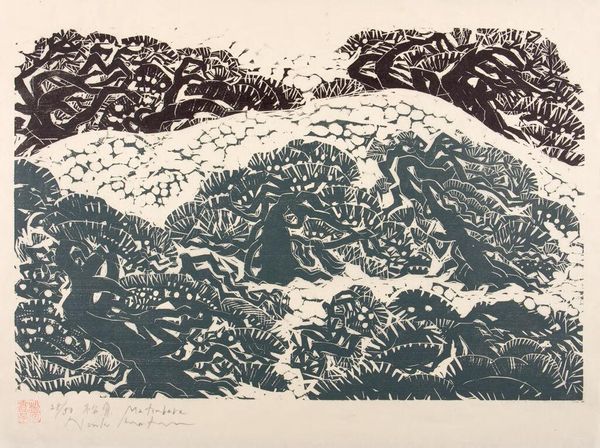
Dimensions: plate: 55.7 x 30.2 cm (21 15/16 x 11 7/8 in.) sheet: 67 x 41.3 cm (26 3/8 x 16 1/4 in.)
Copyright: National Gallery of Art: CC0 1.0
Curator: Here we have Karl Schrag's "Lonely Heights" from 1955, a fascinating blend of linocut, etching, and monoprint techniques. Editor: Immediately striking! The color palette and rugged lines convey a raw, almost turbulent, mood. The high contrast amplifies that sense of drama, doesn't it? Curator: It does. Let's consider the technical aspects. Schrag combines diverse printmaking methods—linocut providing bold lines, etching lending texture, and monoprint adding unique color variations—resulting in a rich layered surface that transcends typical printmaking. We should acknowledge the labor inherent in each process: carving, etching, printing, requiring the investment of time and technical know-how from the artist. Editor: Precisely. Beyond process, what resonates with me is the sky, almost mimicking a breaking wave, evoking power but also the fragility of nature. It’s juxtaposed with the jagged mountain shapes and the seemingly desolate landscape—I wonder what these signify, perhaps resilience in isolation? Curator: I believe Schrag employs landscape as more than just scenery; it serves as a symbolic terrain. Notice the placement of the bare tree. In many cultures, barren trees often represent death, or the stark realities of life, in contrast to more lush symbols of nature like healthy trees. Editor: Yes, the visual tension speaks volumes. Perhaps Schrag meant to address universal themes about man versus nature? Considering its date—post-war 1955—do you think it reflects a certain unease, maybe environmental concerns beginning to take root? Curator: Possibly. Though Schrag presents us with romanticized heights and naturalistic features, the combination of these printmaking methods does draw attention to the physicality of the print itself, reminding us it is a made object, and therefore culturally contingent. Its expressionistic style then places it firmly within debates around high art's relationship to the industrial methods and output in the mid-century. Editor: Intriguing, to view even the landscapes in this frame of material inquiry and context. Thank you for sharing insights both textural and conceptual, reminding us about how "Lonely Heights" holds multitudes. Curator: And thank you for showing me some alternative points of view in seeing what at first seem to me very grounded artistic creations.
Comments
No comments
Be the first to comment and join the conversation on the ultimate creative platform.
